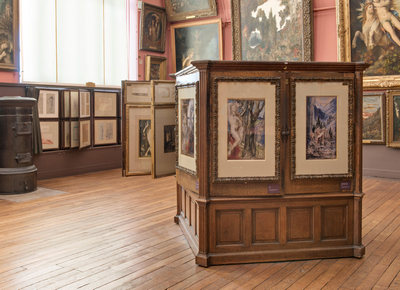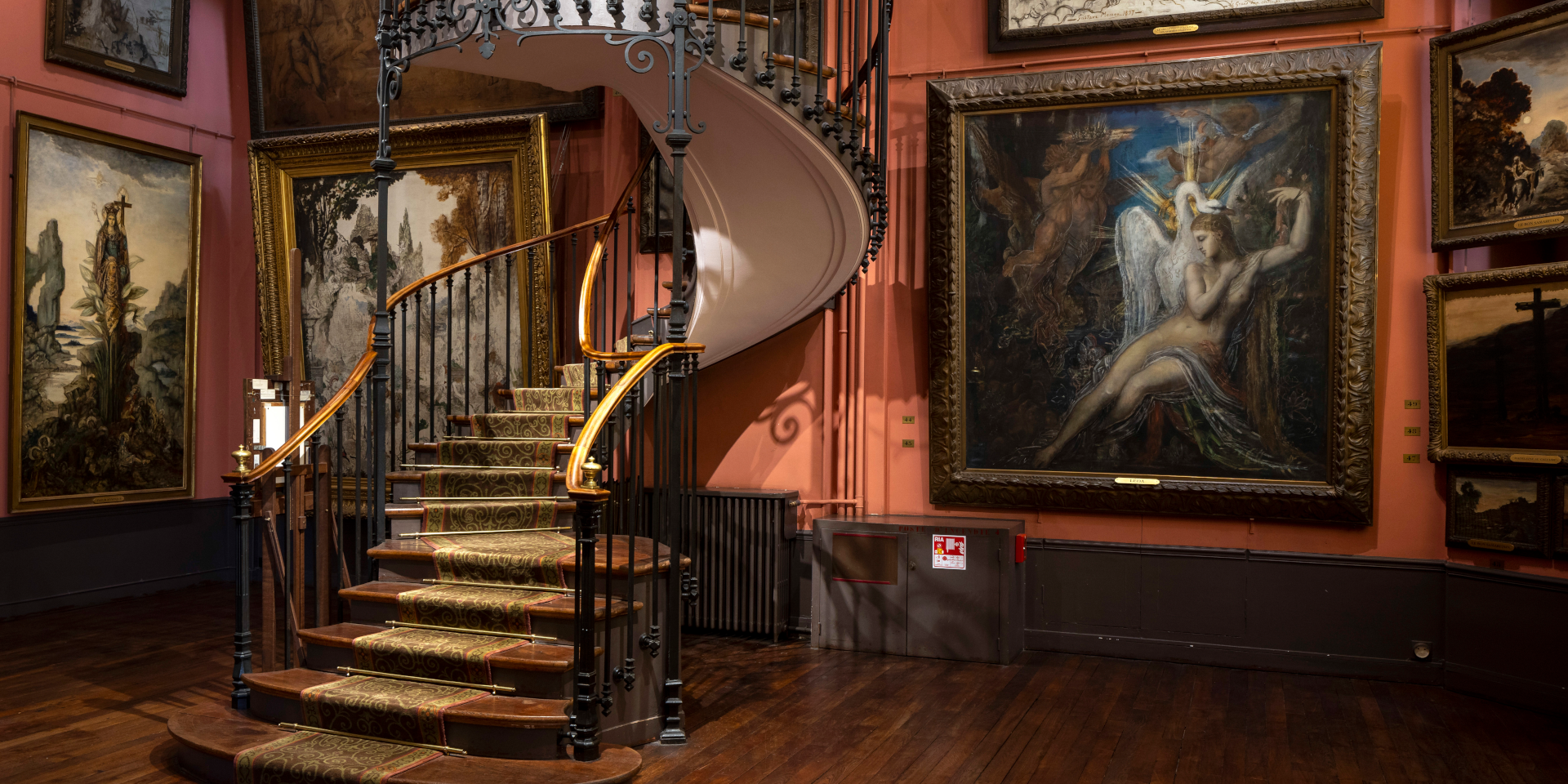Very early on, Gustave Moreau seems to have wondered about the fate of his work. In 1862, still unknown, he noted this reflection at the bottom of a sketch: "This evening, December 24, 1862. I think of my death and the fate of my poor little works and all these compositions that I take the trouble to bring together. Separated, they perish; taken together, they give a little idea of what I was like as an artist and the milieu in which I liked to dream? "

At the end of his life, after the death of his family and friends, Gustave Moreau decided to create a museum for his work. He kept most of his paintings with him, working on them constantly and cramming them into the small house at 14 rue de La Rochefoucauld. In this modest house acquired in 1852, where he had lived with his parents and then alone, the artist had a small studio on the third floor. In 1889, Paul Leprieur, in his monograph on the artist, left an invaluable account of the house and studio: "In this new district... it stands out for its modest appearance, its slightly old-fashioned setting and I don't know what wildness that gives it the air of being afraid of passers-by [...] The studio is his laboratory and there, far from the noise, he indulges in his work as an alchemist, always restless, in love with perfection..."
In April 1895, Moreau asked architect Albert Lafon to transform the family home into a museum. The apartments on the second floor were fitted out as a small sentimental museum, where family portraits and works donated by his friends Théodore Chassériau, Eugène Fromentin or Edgar Degas were hung. The second and third floors become large, north-facing glass-fronted studios, designed to offer as much space as possible. A majestic spiral staircase links them together. Several hundred paintings and watercolors, as well as thousands of drawings, can now be exhibited.
In his will dated September 10, 1897, Gustave Moreau entrusted his old friend Henri Rupp with completing his project. Moreau died on April 18, 1898. Henri Rupp then set about hanging the works according to the artist's wishes, once the interminable after-death inventory had been completed.
The bequest was accepted by the French State The bequest was accepted by the French government in 1902. The Gustave Moreau Museum opened in 1903. Its museography has remained unchanged ever since.
"I bequeath my house located at 14, rue de La Rochefoucauld, with all that it contains: paintings, drawings, cartoons, etc.., work of fifty years, as well as what is contained in the said house, the former apartments once occupied by my father and mother, to the State, [...] on this express condition of always keeping - it would be my dearest wish - or at least as long as possible, this collection, preserving its overall character that always allows us to see the amount of work and effort of the artist during his life. "
Gustave Moreau's will of September 10, 1897
(Extract)
Presentation of the Gustave Moreau Museum by musee-moreau


